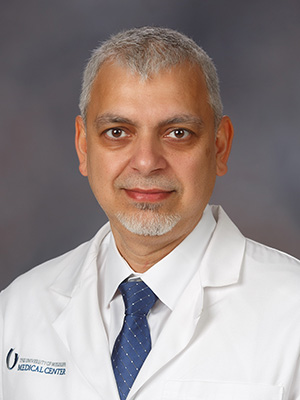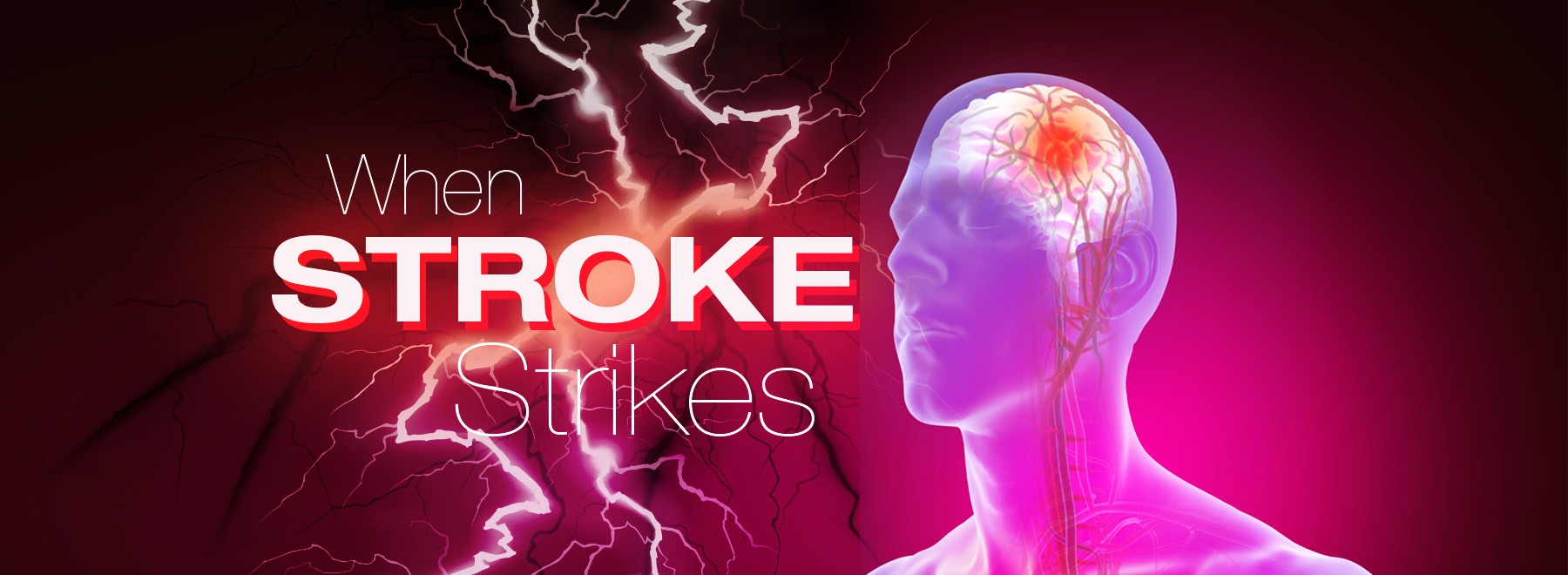To recognize warning signs, it pays to BEFAST
Note: This story appears in the April 2019 edition of CONSULT, the monthly e-newsletter published by the UMMC Division of Public Affairs that focuses on cutting-edge clinical advances, innovative educational programs and groundbreaking research occurring at UMMC. To receive CONSULT in your email, visit www.umc.edu/CONSULT to sign up.
It came as a shock when well-known actor Luke Perry suffered a massive ischemic stroke in February and died days later at age 52.
Didn’t he stay in great physical condition? Wasn’t he too young to have a debilitating and ultimately fatal cerebrovascular accident?

Those are common misconceptions about stroke, according to Dr. Shashank Shekhar, a cerebrovascular neurology specialist, and Dr. Leena K. Gupta, a house officer in the Department of Neurology at the University of Mississippi Medical Center.
“Certainly actors like Luke Perry keep themselves in fit shape; however, sometimes there are factors which are beyond our control,” Gupta said, “like genetics, wherein you have a familial disorder of elevated cholesterol or have a disease that may predispose to have a clotting disease that you are unaware of.
“Although nearly three-quarters of strokes generally affect older individuals greater than 65, about 10 percent to 14 percent of patients with stroke are less than 50 years of age.”
Gupta said recent epidemiological studies have shown a significant trend toward increased stroke incidence rates among individuals from 20-54 of all races. The reason this age “shift” has been detected may be due to a number of factors, she said.

“Many young adults do not see a doctor regularly,” Gupta said. “Stroke is often the end result of sustained stroke risk factors which have not been attended to, either because stroke prevention treatments are applied preferentially to the elderly population – where physicians expect them to occur – and less so in younger adults."
"The most common risk factors for stroke in the young population were found to be similar to those older stroke patients and includes hypertension, dyslipidemia and smoking," Shekhar said. "However, certain risk factors more commonly seen in younger patients include cervical artery dissection, patent foramen ovale and hypercoagulable syndromes."
Gupta said another reason younger individuals have been reported to have strokes more frequently could be because of heightened awareness of stroke in the general public.
"A final possibility is that more strokes in the younger population are being detected due to greater use of MRI (magnetic resonance imaging),” she said.
Gupta said there are two kinds of stroke.
“An ischemic stroke is the most common type and occurs when there is a lack of blood supply to a part of the brain," she said. "This lack of blood flow can be commonly due to an occlusion of a blood vessel from a blood clot or a cholesterol plaque.
"In hemorrhagic type there is a weakened blood vessel that ruptures and spills blood into the brain tissue. For both these types, there is a rapid loss of function resulting from the affected area of the brain that cannot work properly, either due to lack of blood flow - an ischemic stroke - or to mass effect from the hematoma - a hemorrhagic stroke."
Gupta referred to a garden hose for an analogy. When there is a kink in the hose, there will be no water supply for the garden. This is what happens in an ischemic stroke. But if there is too much pressure in the hose, it can leak or burst. This is what happens in a hemorrhagic bleed.
According to the American Heart Association, stroke is the second-leading cause of death worldwide, and hypertension is the leading cause of stroke. Gupta said other medical diseases that could predispose a person to stroke are diabetes, hyperlipidemia, atrial fibrillation and cardiac diseases, especially if they are not optimally treated or remain undiagnosed.
Gupta said other social factors that can result in stroke are smoking; drug abuse; diets that contain high cholesterol, especially trans-fat and saturated fat; and diets that are high in sodium. Obesity and a sedentary lifestyle also can be contributors.
She said a catchy mnemonic to remember to help detect stroke is BEFAST, which stands for:
Balance loss
Eyes (changes in vision)
Facial drooping
Arm weakness or numbness
Speech difficulty and
Time to call 911.
Prompt treatment for someone exhibiting stroke symptoms is very important, she said, because it can result in a greater chance of recovery from stroke, either partially or completely, and a decreased likelihood of permanent disability and less need for extensive rehabilitation.
"The Medical Center has the Stroke Center available 24/7 staffed by a multidisciplinary team composed of emergency, neurology and neurosurgery department nurses; nurse practitioners; physician assistants; and physicians, as well as rehabilitation, pharmacy and coordinated care services, to deliver the appropriate holistic assessment and management for a patient who has stroke symptoms," Shekhar said.
He also said a good resource for the public is the American Heart Association website, which includes resources for patients and family members to read regarding stroke recognition, prevention, treatment and rehabilitation and recovery.
“The BEFAST guideline is an excellent acronym to remember to catch the warning signs of stroke,” Gupta said. “Timely treatment is the key to saving someone’s life or quality of life.
“A person loses 2 million nerve cells for every minute they don’t receive medical treatment during a stroke, so getting to the hospital can be a life saver, as well as higher quality of life."
"Since nerve cells are the core components of the brain and the more nerve cells that are lost, the greater the chance of permanent disability with speech difficulty, paralysis and permanent disability,” Shekhar said.
Deaths from stroke have declined significantly during the last two decades, but other health conditions, such as cancer, cardiovascular disease or accidents, may contribute to its mortality, Gupta said. She cited mortality statistics that indicated death within the first 28 days after a stroke is estimated to be 28 percent; within the first year, 41 percent; within 3-5 years, 63 percent; and after seven years, 72 percent.
“The most common cause of death in the first week of stroke is generally a massive ischemic stroke, which can result in cerebral herniation and eventual respiratory failure or brain death," she said. "Other causes of death in stroke patients are indirectly related and are due to complications in the intensive care unit, like mechanical ventilator-related complications, hospital-acquired infection and multi-organ dysfunction, as well as thromboembolic complications in the first three months.”
So although it may not be possible to completely avoid having a stroke, Gupta suggests the following to increase the odds of never getting one:
“Exercising 30 minutes or more for five days a week; eating a low-cholesterol, low-salt diet and having annual checkups with physicians are recommended for healthy young adults,” she said. “Going forward, primary care providers seeing young adults must identify, counsel and treat risk factors for vascular events like stroke and heart disease.”


